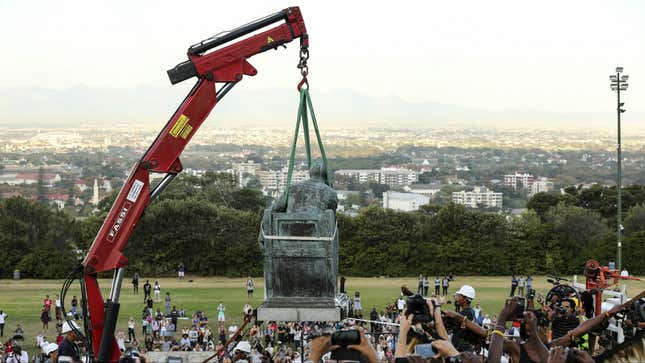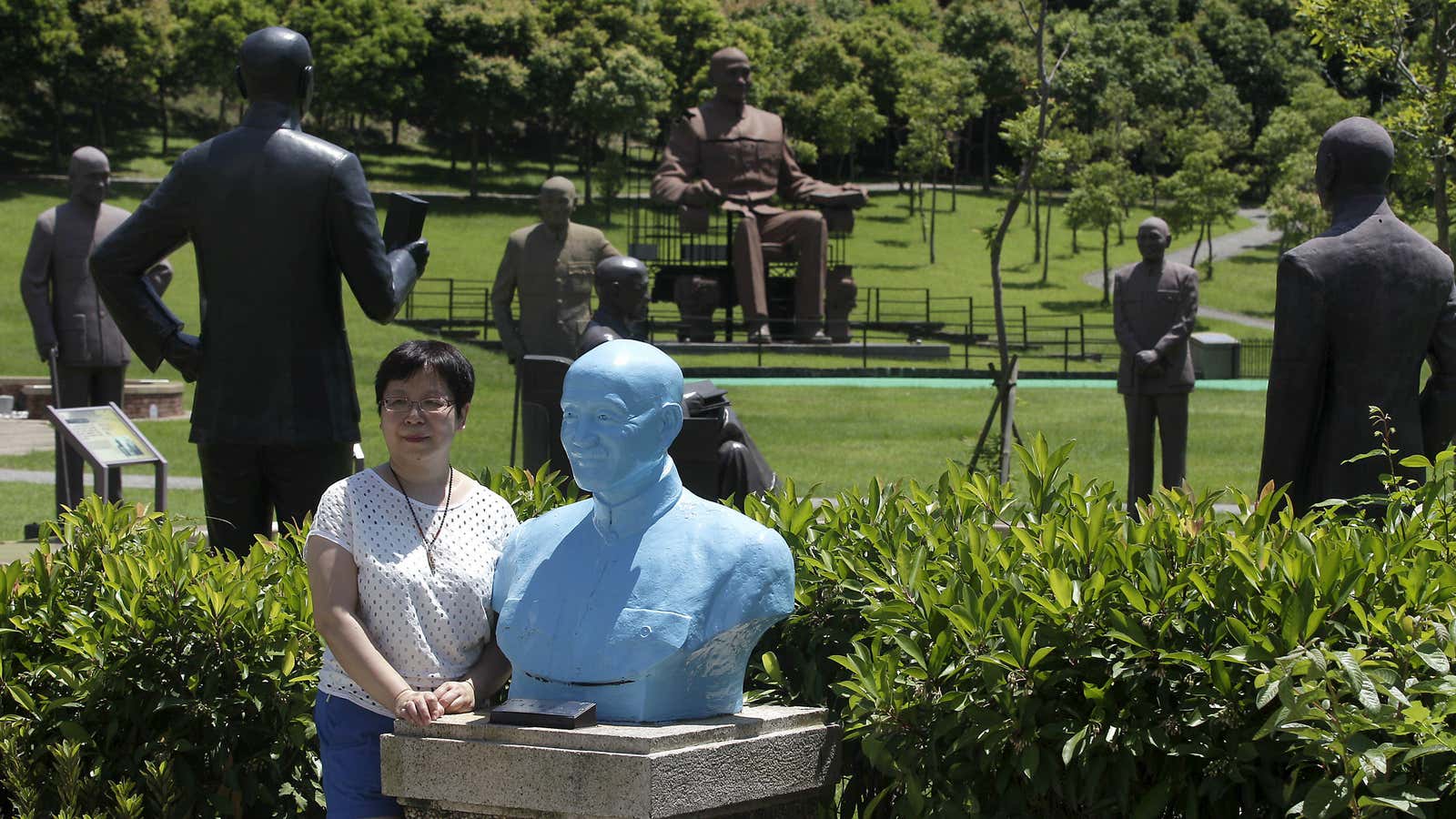After a protest against the removal a Confederate statue sparked deadly violence in the US, states around the country are mulling removing similar icons of history from parks and public spaces.
To families whose ancestors died during the Civil War, the statues are a tribute to lost lives. The memorials, though, are also symbols of Confederate America, a dark era of slave ownership. To families with ancestors who were slaves, they are relics of repression and concrete tributes to the white supremacist movement.
Below are examples of what other countries have done with monuments of oppression.
Just take them down
In South Africa, where roots of racism run deep, a group of students and activists called for a statue of British colonialist Cecil Rhodes to be removed from the University of Cape Town campus.
Rhodes, in addition to serving as prime minister of Britain’s Cape Colony, founded the De Beers diamond business group. He also passed the Glen Grey Act, a law that limited voting and land ownership rights for black South Africans, paving the way for apartheid.
In March, activist Chumani Maxwele kicked off what became known as the ‘Rhodes Must Fall’ campaign after hurling a bucket of human excrement at the monument. Protests swelled, the university council conducted a vote, and the statue was placed for “safe keeping” by April.

Put them in a museum or “memorial park”
Others countries wrestling with where to put monuments of oppression have simply rounded them up and deposited them in a park.
In Taiwan, where Chiang Kai-shek carried out a brutal authoritarian rule for decades, hundreds of statues of the dictator have been re-located to a park in Taoyuan, about 60km from Taipei. The current administration is also considering renaming Chiang Kai-Shek Memorial Hall, a towering structure and popular tourist attraction, as well as removing the statue that sits atop its grand set of stairs. While Taiwan technically remains the same “Republic of China” that Chiang ruled and his party continues to wield power, he remains a symbol of mainland Chinese colonialism in an island where most identify as Taiwanese, not Chinese.
In Eastern Europe, meanwhile, various former Soviet bloc countries have exiled monuments of former USSR luminaries to museum-like settings. Hungary promptly removed all of its statues of Lenin, Engles, and puppet government leaders after the Soviet Union collapsed in 1989, and in 1993 put them on display in Memento Park in Budapest. Poland has plans to do similar. Lithuania got slightly more creative—it moved its statues of Stalin to a Soviet-style theme park, where guests can get interrogated by secret police.
In India, meanwhile, after independence in 1947, statues of various British rulers who held power the colonial era were moved to Coronation Park in Delhi, originally the site of Queen Victoria was named Empress of India in 1877. The site and its monuments have since fallen into disrepair (paywall), and efforts to renovate it have stalled.
“Reconstitute” them
In 1991, efforts to remove a statue of Paraguayan Alfredo Stroessner led to its unexpected shattering. Later, Paraguayan artist Carlos Colombino reconstructed some of its remains, placing them inside two slabs of concrete.
Of course, in many places where statues are removed, relocated, or remodeled, the remnants of their rule—both the good and the bad—remain. Much like how some Americans see positive symbolic or historic value in preserving Confederate monuments, many Taiwanese still hold dear Chiang’s vision for a reunion with the mainland, and many members of former Soviet states long for the order and social welfare that communism provided. While a statue from an ugly era of history can be relocated or demolished, the legacy from those dark stains can be monumental.
